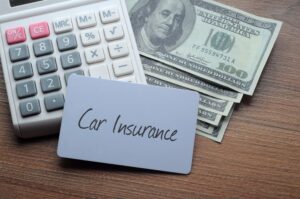If you've recently been in a car crash, you're probably wondering how much your car insurance rates will go up after an accident. It's a common concern. You need to know the potential impact on your premiums to manage your finances and make informed decisions about your coverage. Car accidents can significantly affect your insurance rates, often leading to higher monthly payments. However, the exact increase depends on various factors, including who was at fault, the severity of the accident, and your driving history. If you suffered injuries or other losses in an accident someone else caused, you need to protect your rights and potential compensation. An experienced car accident attorney can help you navigate the complex world of insurance claims and ensure the insurance company doesn’t unfairly penalize you for an accident that wasn't your fault. Read on to learn how accidents can affect car insurance rates and what you can do to minimize the financial fallout.
Factors That Influence Car Insurance Rate Increases After an Accident
 Several key factors determine how much your car insurance rates might increase following an accident. They include:
Several key factors determine how much your car insurance rates might increase following an accident. They include:
Fault Determination
One of the most significant factors in determining rate increases is who was at fault for the accident.At-Fault Accidents
If you're found to be at fault for an accident, you can generally expect a more substantial increase in your insurance premiums. Insurance companies view at-fault accidents as indicators of risky driving behavior, which translates to a higher likelihood of future claims. For example, if you rear-ended another vehicle because you were following too closely, your insurer might raise your rates by 45% or more, depending on the circumstances and your insurance company's policies.Not-at-Fault Accidents
In theory, your rates shouldn't increase if you weren't at fault for the accident. However, the reality isn't always so straightforward. Some insurers may still raise your rates slightly, even for not-at-fault accidents, viewing any involvement in a collision as an increased risk. That said, rate increases for not-at-fault accidents are typically much smaller than those for at-fault accidents, if they occur at all. Some states have laws prohibiting insurers from raising rates for not-at-fault accidents.Severity of the Accident
The seriousness of the accident plays a crucial role in determining rate increases.Property Damage
Minor fender benders with limited property damage typically result in smaller rate increases compared to accidents involving significant vehicle damage. For instance, a small dent might lead to a 10-15% increase, while major damage requiring extensive repairs could result in a 30-50% hike.Bodily Injury
Accidents involving injuries tend to lead to larger insurance payouts and, consequently, more substantial rate increases. If someone was hurt in an accident you caused, you might see your premiums jump by 50% or more. This is one reason why it's crucial to have adequate bodily injury liability coverage. While it may cost more upfront, it can protect you from devastating financial consequences if you're at fault in a serious accident.Driver's History
Your driving record before the accident also influences how much your rates might increase.Previous Accidents
If you have a history of accidents, especially at-fault ones, you can expect larger rate increases for each subsequent accident. Insurance companies view multiple accidents as a pattern of risky behavior, not isolated incidents. For example, your first at-fault accident might result in a 30% increase, but a second one within a short time frame could lead to a 60% hike or even non-renewal of your policy.Traffic violations
Your history of traffic violations, such as speeding tickets or running red lights, also factors into rate increases after an accident. One estimate claims the national average is nearly a 40% increase in insurance premiums for speeding tickets and other traffic citations. A clean driving record might help minimize the impact of an accident on your rates, while a history of violations could amplify the increase.Insurance Company Policies
Different insurance companies have varying policies for handling rate increases after accidents. Even after one accident with an otherwise clean driving record, rate increases range from 17% up to 69% based on the insurance carrier alone.Accident Forgiveness Programs
Some insurers offer accident forgiveness programs, which can help protect you from rate increases after your first at-fault accident. These programs often come at an additional cost or are offered as a loyalty perk for long-term customers with clean driving records.Surcharge Schedules
Insurance companies use surcharge schedules to determine rate increases after accidents. These schedules outline how much your premium will increase based on factors like fault, accident severity, and your driving history. While these schedules aren't typically public, you can ask your insurance agent for more information about how accidents might affect your specific policy.When Will Insurance Rates Decrease After an Accident?
While rate increases after an accident can be frustrating, they're not permanent. Understanding when and how your rates might decrease can help you plan for the future.Time Passed Since the Accident
Most insurance companies consider accidents as part of your driving record for three to five years. As time passes, the impact of the accident on your rates will gradually diminish. For example, you might see the highest rate increase immediately after the accident, with smaller increases (or even decreases) each year at renewal time, assuming you don't have any new accidents or violations.Maintaining a Clean Driving Record
The best way to improve your rates after an accident is to drive safely and avoid any further incidents. Each year that passes without an accident or traffic violation demonstrates to your insurer that you're a lower risk, which can lead to lower premiums. Many insurers offer "good driver" discounts for maintaining a clean record for a certain period, typically three to five years. Qualifying for these discounts can significantly reduce your rates.Age and Experience of the Driver
For younger drivers, simply getting older and gaining more driving experience can lead to lower rates over time. Insurance companies generally view older, more experienced drivers as lower risk. If you had an accident as a teenager or young adult, you might see your rates decrease more quickly as you enter your mid-20s and beyond, assuming you maintain a clean record.Ways to Minimize Rate Increases After an Accident
 While rate increases after an accident are common, there are several strategies you can employ to minimize their impact on your wallet. Along with taking advantage of accident forgiveness programs from your insurer and maintaining a clean driving record, other methods to reduce your rate increases after an accident include:
While rate increases after an accident are common, there are several strategies you can employ to minimize their impact on your wallet. Along with taking advantage of accident forgiveness programs from your insurer and maintaining a clean driving record, other methods to reduce your rate increases after an accident include:
